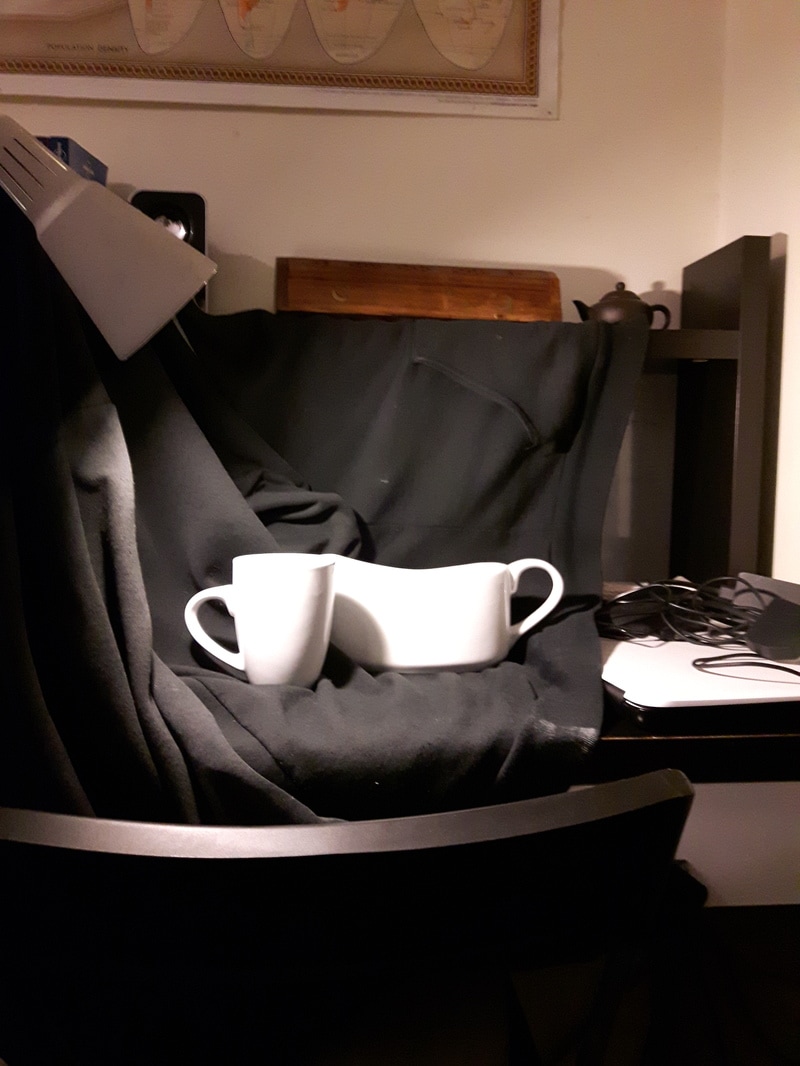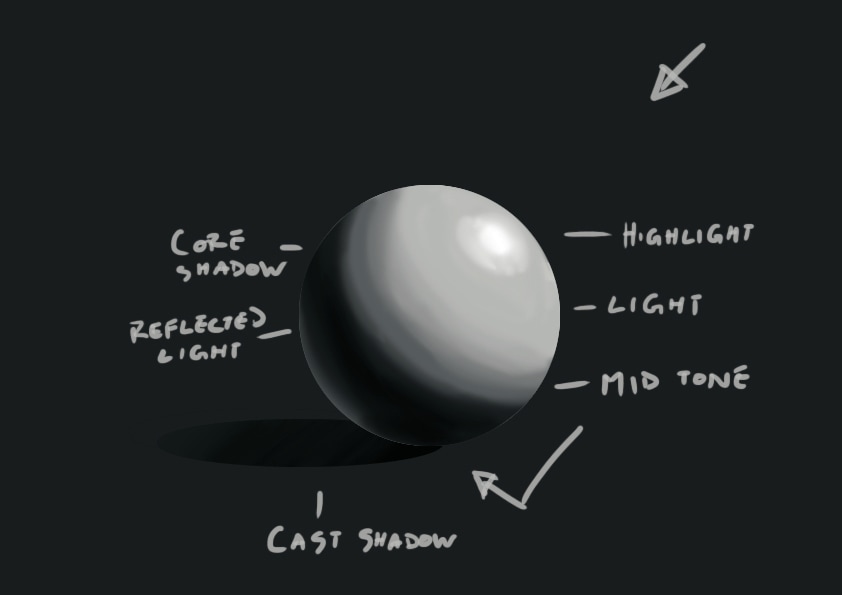|
In realistic drawing we seek to give the viewer the illusion of a three dimensional composition through light and dark. This illusion is also called chiaroscuro. The first step in this process is being able to see light and dark accurately. This is the first of two exercises I recommend to gain a basic understanding of light. This exercise can be done in paint or charcoal. You’ll need: Fabriano Ingres paper or thick textured drawing paper Willow Charcoal A Chamois - or – A canvas board Black or burnt umber paint Brushes and palette Tissue Turpanoid or white spirit I recommend drawing from objects which are white or monochromatic. This means you won’t have the additional challenge of reducing colour information to black and white. Here’s the style of composition I recommend beginning with. Start with a black background and white objects. Use a single, direct light source and block out any additional light sources in the room with boards or a box. There’s nothing incorrect about multiple light sources, but they can add confusion to this exercise. Having a studio is always helpful, but as you can see it's possible to do at home. Try using a simple drawing system like the enveloping or ‘Encajar’ system that was popularised in Europe during the 19th and early 20th centuries. This example is from Charles Bargue’s lessons for students attempting to gain entry to the Ecole de Beaux Arts de Paris. Here’s an example I’ve set up. I start by drawing a box that contains all objects in the composition. Check the proportion of the height against the width. Then draw lines cutting out the negative space and marking mid points of composition. Remember to look at the whole composition rather than drawing object by object. Here’s another two examples. Next, draw the lines of the shadow shapes. For this exercise we will be drawing solely in two tones so ignore the fourth stage. It will be covered in Part 2. In order to reduce all of the nuanced tones to black or white, squint when you look at your subject. This will simplify the tones and push middle tones to either dark or light. Be careful when approaching the reflected lights. Reflected lights are almost always still a dark. If you make them too light, it will flatten the image and you will lose the illusion of chiaroscuro. Finally colour in the dark areas using the side of a one inch piece of willow charcoal. At this point we are only drawing shapes of light and dark. So if you have an area of shadow on an object next to a dark background, there is no need to colour up to the edges of the object. Draw over your lines since the whole area is in shadow. The below example shows the direction your charcoal should move. Throughout your drawing, correct any proportional errors you find. Every time you put down new information is a chance to asses what’s already on the page. Don’t be discouraged if you see a number of errors once you colour in the darks. This is normal and is one of the best moments to correct your drawing. Spend 20-30 minutes per drawing and repeat the process over and over again with different compositions. Seeing light and dark is learned through repetition. Think of this exercise the same way a musician practices scales or boxer punches focus mitts. When you feel ready try more complex objects and backgrounds like the composition above. Don’t be intimidated by any subject. Everything can be reduced to light and dark. I run classes on site and online, for more information please contact me.
1 Comment
Laura
2/10/2022 04:30:53 pm
Hi, this is very helpful. I have been struggling with Charles Bargue’s Plate 50, Marcus Brutus. Needed guidance. Thank you.
Reply
Leave a Reply. |
Categories
All
Archives
December 2018
|






